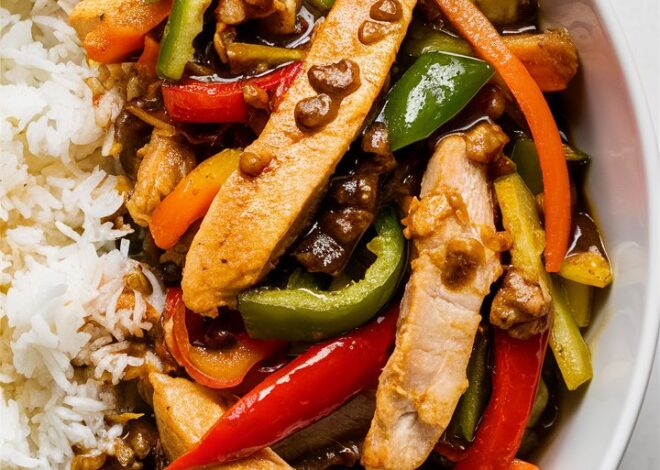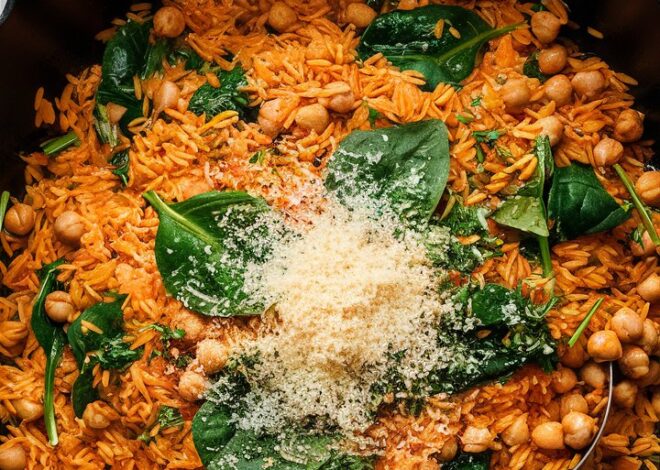
Step-by-Step Instructions to Make Creole Mustard Sauce 2025
Creole Mustard Sauce is a bold, zesty condiment that elevates ordinary meals into unforgettable culinary experiences. With its perfect balance of heat, tang, and creaminess, this sauce embodies the essence of Louisiana flavors. Whether you’re dipping, drizzling, or spreading, Creole Mustard Sauce adds a kick of flavor to everything from seafood and meats to sandwiches and vegetables.
In this comprehensive guide, we’ll explore everything you need to know about making, customizing, and using Creole Mustard Sauce, including expert tips, ingredient breakdowns, step-by-step instructions, variations, storage advice, and answers to frequently asked questions. By the end of this article, you’ll have a complete reference for mastering this iconic sauce.
Why Creole Mustard Sauce Is So Special
Creole Mustard Sauce is more than just a condiment—it’s a culinary experience. Its origins trace back to Louisiana’s rich Creole culture, where bold spices and flavorful sauces are the cornerstone of regional cuisine. This sauce offers a perfect balance of:
- Creaminess from mayonnaise
- Tang and texture from whole-grain mustard
- Heat and sharpness from prepared horseradish and Creole spices
- Bright notes from lemon juice and fresh herbs
Its versatility makes it a kitchen staple. Unlike single-use condiments, Creole Mustard Sauce can adapt to different dishes, whether you’re serving fried shrimp, grilled sausages, or roasted vegetables. Moreover, it’s quick to prepare, requires no cooking, and is fully customizable to your spice preference.
Essential Ingredients
To create the perfect Creole Mustard Sauce, high-quality ingredients are key. Here’s a breakdown of what you’ll need:
1. Real Mayonnaise
The creamy base that binds all flavors together. Opt for full-fat, high-quality mayonnaise for best results.
2. Whole Grain Mustard
Provides texture and a tangy depth that smooth mustards cannot. You can substitute with Dijon or spicy brown mustard if needed.
3. Prepared Horseradish
Adds bold heat and a sharp bite. Adjust quantity based on your tolerance for spiciness.
4. Ketchup
Just a touch balances the heat and acidity, giving the sauce a subtle sweetness.
5. Lemon Juice
Brightens the sauce, cutting through richness and enhancing other flavors.
6. Creole Seasoning
The star of the sauce—adds a blend of paprika, garlic, onion, thyme, oregano, and cayenne pepper for a true Louisiana flavor.
7. Garlic
Fresh minced garlic adds aromatic depth that dried garlic can’t match.
8. Worcestershire Sauce
A dash of umami richness enhances the complexity of flavors.
9. Herbs
Dried parsley and chives provide earthy undertones; fresh herbs can be used for a more vibrant flavor.
10. Sugar (Optional)
Balances acidity and heat, but can be replaced with honey or maple syrup for natural sweetness.
Step-by-Step Recipe
Here’s how to make Creole Mustard Sauce in just a few minutes:
Ingredients
- ⅔ cup mayonnaise
- 4 tablespoons whole grain mustard
- 2 tablespoons prepared horseradish
- 1 tablespoon ketchup
- 2 teaspoons lemon juice
- 2 teaspoons dried parsley (or 6 tsp fresh)
- 2 teaspoons dried chives (or 6 tsp fresh)
- 2 teaspoons Creole seasoning
- 1 teaspoon minced garlic
- 1 teaspoon Worcestershire sauce
- ½ teaspoon sugar (optional)
Instructions
- Combine Ingredients
In a medium mixing bowl, whisk together mayonnaise, mustard, horseradish, ketchup, lemon juice, herbs, garlic, Worcestershire sauce, Creole seasoning, and sugar. - Whisk Until Smooth
Ensure all ingredients are fully blended into a creamy consistency. A whisk works best, but a spoon or fork can suffice. - Chill for Maximum Flavor
Cover and refrigerate for 30 minutes to 1 hour. This allows flavors to meld and intensify. - Adjust to Taste
After chilling, taste and add more horseradish, Creole seasoning, or lemon juice if desired.
Pro Tips for Perfect Creole Mustard Sauce
- Use High-Quality Ingredients: The base of mayonnaise and mustard significantly impacts flavor.
- Adjust Heat: Add more horseradish or Creole seasoning gradually until desired spice is reached.
- Chill Before Serving: Resting enhances flavor and ensures the sauce thickens slightly.
- Double the Recipe: It keeps well in the fridge and is versatile for multiple dishes.
- Fresh Herbs: Swap dried parsley and chives with fresh versions for a brighter, more aromatic sauce.
Serving Suggestions
Creole Mustard Sauce is incredibly versatile. Here’s how to use it:
Seafood
- Fried shrimp, crab cakes, or grilled fish
- Dipping sauce for oysters or calamari
Meats
- Grilled sausages, pork chops, chicken skewers
- Marinade for roasting meats
Vegetables & Sides
- Roasted potatoes, fries, or roasted root vegetables
- Vegetable platters or crudité
Sandwiches
- Po’ boys, burgers, or wraps
- Substitute for mayonnaise or aioli
Other Creative Uses
- Add to deviled egg filling for a spicy twist
- Drizzle over grilled vegetables or baked potatoes
- Mix into potato salad for extra kick
Variations and Substitutions
- Mustard Alternatives: Dijon or spicy brown mustard if whole grain is unavailable.
- Extra Heat: Add a few dashes of hot sauce or cayenne pepper.
- Vegan Version: Use vegan mayonnaise and Worcestershire sauce alternatives.
- Herb Boost: Triple the amount if using fresh parsley and chives instead of dried.
- Natural Sweeteners: Honey or maple syrup can replace sugar for a healthier option.
Storage and Make-Ahead Tips
- Refrigerate: Keep in an airtight container for up to 7 days.
- Do Not Freeze: Mayo-based sauces may separate and lose texture.
- Stir Before Serving: Separation is normal; just whisk gently.
- Make Ahead: Flavors intensify after a few hours in the fridge.
- Clean Utensils: Prevent contamination and extend shelf life.
Frequently Asked Questions
Q1: Can I use this as a marinade?
Yes, it works wonderfully for chicken or pork. Marinate for at least an hour for best results.
Q2: How spicy is it?
It has a gentle kick but can be adjusted by increasing or decreasing horseradish or Creole seasoning.
Q3: What is Creole seasoning?
A blend of paprika, garlic, onion, thyme, oregano, and sometimes cayenne pepper. You can buy pre-made or create your own.
Q4: Can I use fresh herbs?
Yes. Use triple the amount of dried herbs when substituting with fresh for optimal flavor.
Q5: Does it contain dairy?
No, this version is dairy-free, using mayonnaise instead of sour cream or cream cheese.
Q6: Can I serve it warm?
Best served cold or at room temperature. Gentle warming is possible but may slightly affect texture.
Health and Nutritional Insights
Creole Mustard Sauce, while flavorful, is also fairly balanced in terms of nutrition when used in moderation:
- Calories: Approximately 50–70 calories per tablespoon
- Fat: Mostly from healthy oils in mayonnaise
- Protein: Minimal
- Carbohydrates: Slight, mainly from ketchup and sugar
For a healthier version, try:
- Using low-fat or light mayonnaise
- Reducing sugar or using natural sweeteners
- Increasing lemon juice or fresh herbs for added flavor without added calories
Creative Ways to Incorporate Creole Mustard Sauce
- Salad Dressing: Mix with a bit of vinegar for a spicy salad vinaigrette.
- Egg Dishes: Drizzle over scrambled eggs or omelets.
- Pizza: Use as a sauce base for a bold twist on traditional pizza.
- Tacos: Adds a zesty flavor to chicken or shrimp tacos.
- Burgers: Spread under the cheese layer for a subtle heat and creaminess.
Culinary History and Cultural Context
Creole cuisine originates from Louisiana, blending French, African, Spanish, and Native American influences. Mustard-based sauces were popular among Creole cooks for their bold flavor and versatility. Over time, Creole Mustard Sauce has evolved from a regional specialty into a staple for home cooks seeking zesty, flavorful condiments that require minimal effort but deliver maximum impact.
Its characteristic heat, tang, and creamy texture make it ideal for complementing fried seafood, smoked meats, and grilled vegetables—hallmarks of Louisiana’s rich culinary tradition.
Common Mistakes to Avoid
- Skipping Chilling: Flavors don’t meld properly without refrigeration.
- Using Low-Quality Mustard or Mayo: Can result in a bland or watery sauce.
- Overloading with Heat: Start small with horseradish or Creole seasoning.
- Ignoring Acidity: Lemon juice balances richness; skipping it can make the sauce heavy.
- Improper Storage: Use clean utensils to avoid contamination and separation.
Final Thoughts
Creole Mustard Sauce is a versatile, flavorful, and easy-to-make condiment that can elevate virtually any meal. From seafood to sandwiches, roasted vegetables, and even deviled eggs, it provides a bold Southern flavor without hours in the kitchen.
With high-quality ingredients, proper technique, and creative applications, this sauce can become a staple in your fridge, ready to transform ordinary dishes into extraordinary experiences.
Whether you’re a seasoned chef or a home cook, mastering Creole Mustard Sauce will give you a taste of Louisiana right in your own kitchen.


